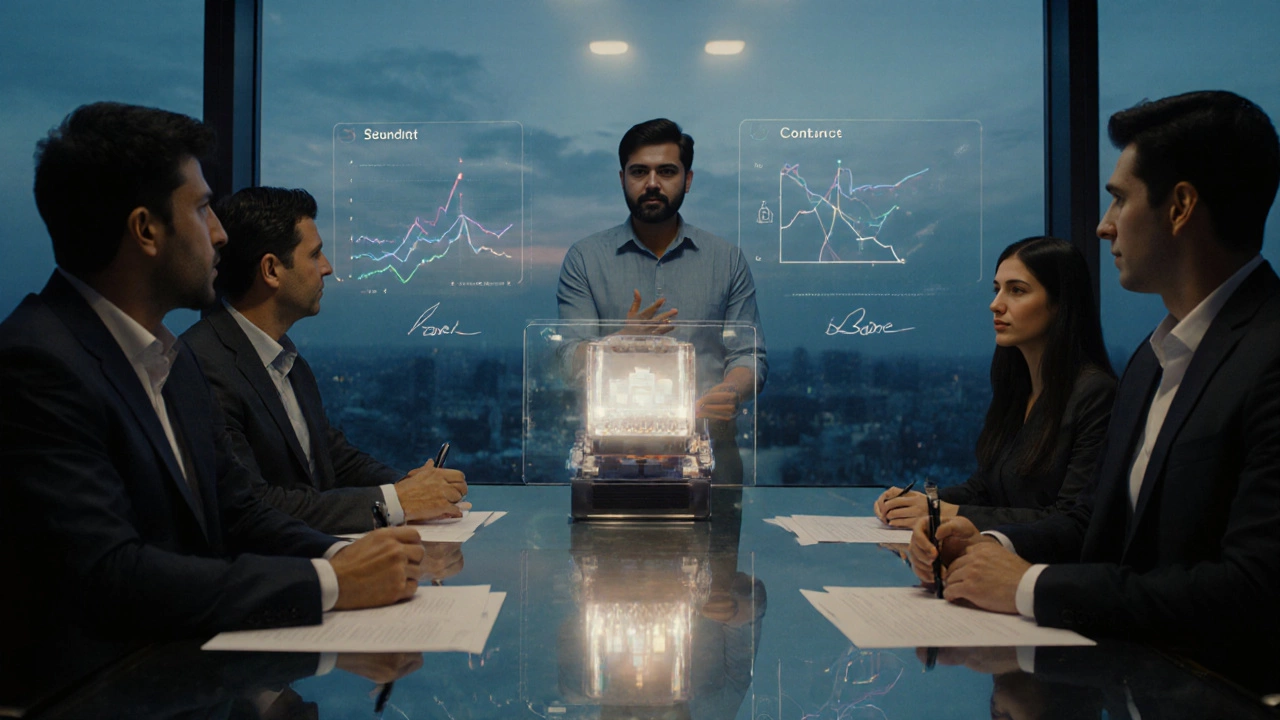Idea Valuation Calculator
Estimate Your Idea's Value
Use this calculator to determine the potential market value of your idea without patent protection. Based on market size, cost savings, and development stage.
Notes: This calculator uses simplified valuation methodology based on industry standards. Actual negotiations may vary based on buyer interest and market conditions. Remember to apply a risk discount (typically 10-30%) due to lack of patent protection.
Quick Takeaways
- Use non‑disclosure agreements (NDAs) and trade‑secret practices to protect your concept.
- Consider licensing, assignment, partnership or crowdfunding as alternative routes to monetize.
- Build a prototype or proof of concept to prove value without filing a patent.
- Value your idea with market research, cost‑saving analysis and comparable deals.
- Seal the deal with clear licensing or sale contracts and retain rights where possible.
Imagine you've just dreamed up a gadget that could cut energy bills for small firms, but you haven't filed a patent yet. Does that mean the idea is dead on arrival? Not at all. Many inventors turn cash‑flow positive before the paperwork catches up, simply by knowing how to package, protect, and pitch the concept the right way.
What Exactly Are You Selling?
Idea is a concept, invention, or solution that solves a problem but may or may not be formally protected by intellectual‑property rights. An idea can be a product design, a software algorithm, a process improvement, or even a brand story. The key is that it's something you can describe, demonstrate, and show value for. Even without a patent, you still have assets: the knowledge, the documentation, and any early prototypes.
Choosing the Right Monetisation Path
Not every buyer wants the same thing. Some prefer outright ownership, while others look for a royalty stream. Below are the most common routes when you’re operating without a patent.
| Option | How You Earn | Control Retained | Typical Buyer | Risk Level |
|---|---|---|---|---|
| Licensing | Royalty per unit or flat fee | High - you keep ownership | Manufacturers, SaaS firms | Medium - depends on enforcement |
| Assignment (sale) | Lump‑sum payment | None - buyer gets full rights | Investors, large corporations | Low - once paid, you’re done |
| Joint Venture/Partnership | Profit share | Shared - both parties develop | Strategic partners | High - requires alignment |
| Crowdfunding pre‑sale | Advance orders, early‑bird pricing | High - you still own idea | Consumers, niche enthusiasts | Medium - depends on campaign success |

Protecting Your Idea Without a Patent
When you can’t fall back on a granted patent, the next‑best tools are legal agreements and practical secrecy.
- Non‑disclosure agreement (NDA) is a contract that obligates the other party to keep shared information confidential. Always have a signed NDA before showing any diagrams, data, or prototypes.
- Trade secret refers to information that has economic value because it is not publicly known and is subject to reasonable secrecy measures. Keep detailed records, limit access, and mark documents as “confidential”.
- Build a working prototype or a minimum viable product (MVP). A physical or functional demo proves feasibility and makes the idea much easier to sell, even if you lack formal IP protection.
Remember, NDAs are not foolproof-honesty and reputation matter. Choose partners who have a track record of respecting confidentiality.
Valuing Your Idea
Buyers will ask, “What’s it worth?” Without a patent, value hinges on market potential and the cost savings you can demonstrate.
- Market size assessment: Identify total addressable market (TAM) and realistic penetration rates.
- Cost‑avoidance analysis: Show how your solution reduces expenses or increases revenue for the buyer.
- Comparable transactions: Look up recent licensing or assignment deals in the same sector. Public databases and industry reports can provide benchmarks.
- Development stage: A working prototype adds a premium; a concept sketch only gets a fraction of that.
- Risk discount: Because you lack patent protection, buyers will apply a discount-typically 10‑30% off comparable patented deals.
Compile these numbers into a one‑page “valuation sheet” that you can share after an NDA is signed.
Crafting a Pitch That Sells
Even the best idea can flop if the presentation is weak. Your pitch deck should be concise-10 slides max-and focus on three things: problem, solution, and return on investment.
- Problem statement: Use real‑world data to illustrate the pain point.
- Solution demo: Show the prototype in action, or a video walkthrough if the product is large.
- Business case: Present the valuation, licensing terms, or sale price you’re targeting.
Practice your elevator pitch (30 seconds) to capture attention at networking events. A clear, confident story is often more persuasive than a dense technical report.

Legal Agreements to Close the Deal
When a buyer says “yes,” the real work begins: drafting a contract that protects both sides.
- Licensing agreement is a contract granting the buyer permission to use your idea in exchange for royalties or fees. Key clauses include royalty rate, territory, duration, and audit rights.
- Assignment contract transfers ownership outright. Include a clause that the buyer acknowledges no existing patents cover the idea, to avoid future claims.
- Include a confidentiality clause even if you already signed an NDA. Redundancy can be a safeguard.
- Specify dispute‑resolution mechanisms-mediation, arbitration, or jurisdiction-to avoid costly litigation.
If you’re not comfortable drafting these yourself, hire a solicitor with experience in intellectual‑property transactions. The cost is a fraction of what a future dispute could cost.
Common Pitfalls & Pro Tips
Even seasoned entrepreneurs stumble. Here are the traps to watch for and ways to sidestep them.
- Undervaluing your idea: Start with a realistic valuation and be prepared to negotiate upward, not down.
- Sharing too much before an NDA: Keep the initial conversation high‑level-problem, market, and proof of concept-until you have a signed confidentiality agreement.
- Ignoring future patent possibilities: If you later decide to file a provisional patent, make sure existing agreements allow you to do so without breaching earlier promises.
- Relying on “first‑to‑market” alone: Competitors can copy unprotected ideas quickly. Secure trade‑secret measures and maintain a speed advantage.
- Choosing the wrong buyer: A large corporation may offer more money but could stall the project. A smaller, agile partner can bring the idea to market faster.
Pro tip: Keep a “deal log” of every conversation, document, and version of your pitch. This audit trail helps resolve disputes and shows professionalism to potential buyers.
Frequently Asked Questions
Can I really make money without a patent?
Yes. Licensing, selling the idea outright, forming a partnership, or launching a crowdfunding campaign can all generate revenue. The key is protecting the concept with NDAs or trade‑secret measures and demonstrating its value through a prototype or market analysis.
What should an NDA include?
An effective NDA defines the confidential information, the parties involved, the duration of confidentiality (usually 2‑5 years), permitted uses, and consequences for breach. It should also state that the recipient may not reverse‑engineer or disclose the idea to third parties.
How do I decide between licensing and selling my idea?
If you want ongoing income and retain control, licensing is best. If you need a quick cash injection or lack resources to enforce rights, an outright sale (assignment) may be preferable. Evaluate your long‑term goals, the buyer’s capabilities, and the market’s size.
Do I need a lawyer for a simple licensing deal?
While you can draft a basic agreement yourself, a solicitor familiar with IP transactions can ensure clauses like royalty calculations, audit rights, and termination conditions are solid. This can prevent costly misunderstandings later.
What if a buyer later files a patent on my idea?
Include a clause in your licensing or assignment contract that any future patents arising from the idea must acknowledge your original contribution and, if possible, grant you a royalty or co‑ownership share.






